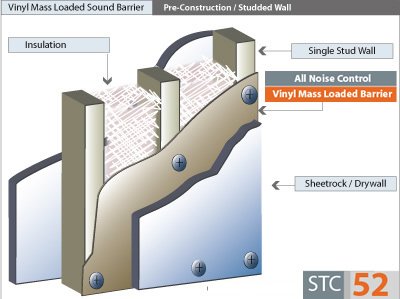

The time it takes a test sound signal to decay by 60dB (rough point of inaudibility) after the source of sound is stopped is measured first with the sample in the room and again with the room empty. To measure sound absorption, a large sample of the material is placed in a reverberation room with all other surfaces being hard and reflective. An NRC of 1.0 indicates perfect absorption (an open 1’x1’ window) and a value of 0.0 represents perfect reflection (polished concrete has an NRC of. These are used to specify the fraction of incident sound that a material absorbs per 1’x1’ area. When comparing sound absorbing products, there is a particular set of terms you should look for: The Sound Absorption Coefficient (SAC) and Noise Reduction Coefficient ( NRC). Sonora® wall and ceiling panels are used for absorbing sound within a space. These porous materials are great for reducing reverberation within a room, but will only marginally reduce the sound that leaves it (but more on that later). “Soft” materials, like heavy blankets, fabric and fiberglass, have loads of nooks and crannies, which sound tries to “fill”. The more surface area a certain material has the better absorber it will likely be. The absorbed sound energy has not vanished, it’s actually been converted into kinetic (vibration of a solid material) and thermal energy (heat due to friction within a porous material) or has simply passed right through the material (transmission). When sound waves meet a room surface such as a wall, ceiling or floor, some of the sound energy is reflected back into the room and the rest is considered to be “absorbed”. However, let’s delve in closer and decipher what is actually usable information, and what is just marketing. On the surface this sounds like an extremely efficient product. We recently encountered an acoustical ceiling tile which was said to “absorb 50% of sound”. It should not be assumed that something which sounds technical is, in fact, backed up by proper testing. Also, given sheer volume of information available on the internet, it is perhaps unavoidable that some info will be incomplete or simply incorrect. In both scenarios, it is important to know which data is relevant and helpful.

These are two separate acoustic issues which require separate solutions. If the problem is sound passing in between spaces, like offices or apartments, then isolation treatment is required. In an overly reverberant auditorium, absorptive treatment is needed to reduce echoes and improve speech intelligibility. In order to make informed decisions about acoustical treatment, it is vital to know the difference between materials that are meant to absorb sound within a room and materials that are meant to block sound from leaving or entering it. Part 1: Acoustic Terminology – Sound Absorption vs Sound Isolation In this series, acoustician Cameron Girard of Acoustics First® hopes to help you distinguish between what’s useful and what’s not. This flood of information can seem intimidating, especially to beginners. MLV100® has Many Uses.For anyone new to the world of acoustics, there is a multitude of terms, coefficients and numbers that are thrown around. Extra Flexible for automative use and easy installation.Effective as a decoupling barrier between plasterboard’s.This does not only save you time and money on waste disposal but together we are protecting our environment and avoiding additional waste being sent to landfills. We strive to be more environmentally friendly with our products so where possible we do not add uncessary plastic wrappings are added to our MLV Range. It is equal to lead of the same mass in effectiveness and acts as a thin de-coupling sound barrier in stud walls, ceilings and timber floors.Biggest sound insulation improvements can be achieved when it is used as one layer between two sheets of plasterboard.

MLV100® Premium Mass Loaded Vinyl a mineral loaded heavy layer nominally 4mm thick with a mass of 10kg/m2 specially designed to block unwanted noise.


 0 kommentar(er)
0 kommentar(er)
